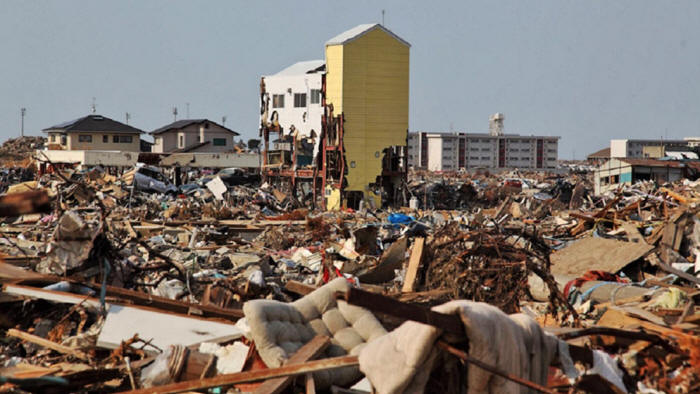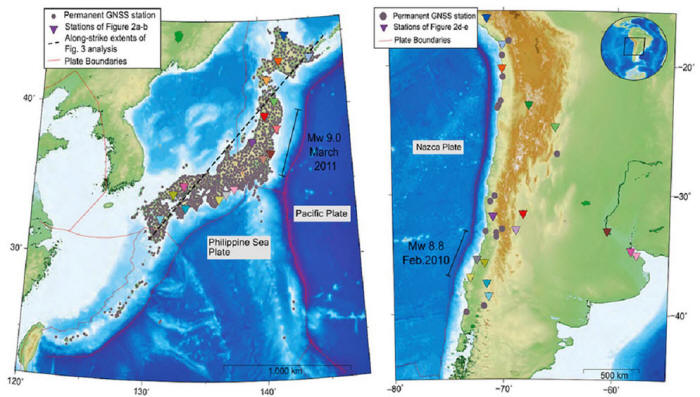|
by Nick Carne April 30, 2020 from CosmosMagazine Website
devastated much of the east coast
of Japan's Honshu island.
It's not clear, though,
whether this will happen again...
Geoscientists
investigated recorded signals capturing the movement of global
navigational satellite systems (GNSS) stations before the 2010
Maule earthquake in Chile (magnitude 8.8) and Japan's
Tohoku-oki earthquake in 2011 (9.0) and noted a strange reversal
of ground motion.
The Tohoku-oki
earthquake led to a devastating tsunami and the
Fukushima nuclear meltdown.
Both events
occurred at
the Pacific Rim where oceanic plates dive beneath the
continental crust in a process called
subduction.
The researchers
say geodetic analyses revealed that a 1000-kilometre-scale region of
the Earth's surface close to the plate boundary alternated its sense
of motion over a period of several months directly leading up to
both earthquakes. The study was led by Jonathan Bedford from GFZ German Research Centre for Geosciences and included scientists from Germany, Chile and the US.
The findings (Months-long thousand-kilometer-scale Wobbling before great Subduction Earthquakes) are reported in the journal Nature.
What the research does show, says Bedford, is that subduction zones are more dynamic on the observable timescale than previously thought.
Michael Bevis says the Japanese wobble would have been imperceptible to people but was obvious in data recorded by more than 1000 GPS stations distributed throughout Japan, which are tracked by GNSS.
Chile's network
is not as dense but tracks most of the deforming continental plate.
Normally, the
stations on land move away ever so slightly from the subduction
trench as the continental crust is squeezed and thus shortened.
Studying the time series of GNSS signals, the researchers found a reversal of direction:
Very shortly
after this second reversal, the underground ruptured and the immense
earthquakes occurred.
The authors
propose that these reversals capture periods of enhanced pulling
caused by rapid, densifying compositional changes in the oceanic
plate as it subducts. Accordingly, they suggest that these periods of enhanced tugging accelerated the inevitable failure at the shallower, frictionally-stuck segments of the subduction zone.
Bedford et al. 2020, Nature
|



